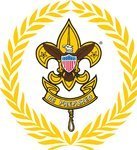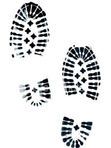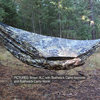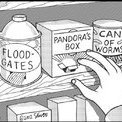Leaderboard
Popular Content
Showing content with the highest reputation on 03/15/19 in all areas
-
I (electronically) asked my family and friends who have scout-aged kids whether they'd be considering continuing in scouting/BSA, regardless of what the church comes up with in terms of a program. The only two people who replied were my sister and my dad, neither of whom have sons in scouting anymore, lol. If what they said is any indication, there are still some families who want their sons to earn Eagle. Unfortunately, I think a lot of LDS troops looked at scouting ONLY as a path to Eagle, and know for a fact that more than a few troops never followed the patrol method well and did very f3 points
-
Yep. Each patrol should have its own separate tent at some distance (at least 100 yards) from the others. This latter is with a view to developing the responsibility of the Patrol Leader for his distinct unit. --Baden-Powell, "The Object of Camping" In Scouts' camps the tents are not pitched in lines and streets as in military camps, but are dotted about, 50 or 100 yards or more, in a big circle round the Scoutmaster's tent. This keeps each Patrol separate a2 points
-
disagree with the skills mastery aspect for leaders, first what exactly is mastery, to me mastery of a skill set takes many years, decades of practice, a good leader can learn and lead, without being a master of such task, if we relied on those who mastered a task, there would be a very limited group of people to turn to for guidance. to me a master of a skill set is one that lives by the skill set on a daily basis not a weekend recreational warrior as most of us are. I have spent decades in the woods, +10 years as almost a minimalist, wouldn't consider2 points
-
I don't understand the issue. BSA's 404 error reflects a web-site with content changing with re-writes to for gender. And, it's not going smoothly. . Nothing I've seen indicates patrol method is at all being eliminated or slighted. What I do see is BSA's literature is largely unchanged. I like the 1950s wording better, but it's largely the same concept adjusted for after 2010 youth protection. But, the concept has not changed. Looking at the 1950s Boy Scout Handbook, the description is largely the same. https://archive.org/details/officialboyscout71967boys/page/82 .... page 882 points
-
Policies made at the 50,000 foot level, far far away from actual persons (dare I say customers??) who are involved in your program, and made by peoples that are not involved in the day to day, actually in the trenches will more than often miss the mark. Typically as the Scouting volunteers move up the ladder of their respective council they move further away from the day to day actual "business" of Scouting. They will be able to speak volumes of how they are involved in the program; Woodbadge staff, working staff at Commissioner College, staffing an event at the council camporee, doing s2 points
-
When I was a scout we didn't have collars. So when I came back with my son and we suddenly had collars I thought the same thing. But, being a frog boiled in cold water .... While there are rules that say anything goes as long as the whole unit agrees, I agree with you. If there's one thing on the uniform that says scout it's the necker.2 points
-
I have personally obtained a FCC business radio license for our Boy Scout Troop and put the Scout Master on the license as the person in charge. We have several VHF frequencies available to use anywhere in the U.S.A. including Territories such as Puerto Rico. Since we could prove our nonprofit status the regulatory fees were waived free. We only had to pay the current FCC application fee of $70. Our license is good for 10 years. We chose to use Digital DMR VHF frequency radios for better clarity over far longer distances than unlicensed toy frs , gmrs or murs radios coul1 point
-
Human nature will find a "way", but I think the "way" will be foreign to seasoned scouters. So, I think you are wrong, seasoned scouters is the problem. Not that that seasoned scouters don't like a challenges, but are they willing to put an effort into something they don't like? My experience of watching many units work toward a change is that the old guard needs to move on and make room for fresh imaginative visionaries who don't have the obstacles of doing it the old ways. I was directly involved in a very successful boy run program that grew from 14 to 100 scouts in five years. I was trying1 point
-
You're right. The requirements are a LOT easier now. I wonder how many scouts who started on some of the easy requirements are going to say, "Aw, heck. I might as well just stick with the old requirements." Uhh, zero.1 point
-
I think the only real "rule" is that once they are registered with a troop, they can't go back and work on Cub Scout advancement. If you're talking about the scenario of "crossover was in February, can they still participate in our pack's Pinewood Derby in March"--that's up to the pack leadership to decide.1 point
-
@Terasec I agree about the difference between solo woodsman and scoutmaster. I started out a scout, turned minimalist, then family camper, then became an ASM/Advisor, there was a good bit to unlearn, a bit to teach others, and a steady pace of re-learning. It's a growing process. But I'm not putting mastery on the level of sensei. My criteria: barring disabilities, can a scouter do everything that we've ask of a first class scout? If he or she can't or hasn't even tried, then he or she needs to "walk that mile" with his or her scouts. The scouts see the leader trying, and it inspires tru1 point
-
Quite right. I like the essence of Terasec's sentiment that service projects should be done for their own value, but there is definite value to making people aware of things like this. "Just another pat on the back" isn't the right reason to spread the word, but increasing visibility for the organization is a benefit to BSA (and other organizations that share its values), and publicizing things like the trash pickup serve a larger goal of educating the public. When scouts document environmental service projects using the Hornaday Project Workbook, they're even asked about media1 point
-
It feels to me like angst is causing more concern than is needed here. I've seen no evidence that the BSA is doing anything to the patrol method. The BSA's changes in language over time probably have more to do with whoever wrote the latest material that references it. Somehow I don't think there is a vault at the BSA where they hold "the defintion of patrol method". As for the comment: You emailed their helpdesk and asked for a definition of the patrol method. These are folks who deal with tracking down people's registration, answering YPT questions, etc. I'm almost certain1 point
-
Seeing how as the Patrol is the fundamental unit of Scouting, that the Patrol Method is the only method and that today in Scouting we do not see patrol method being used enough or very well, I thought I would start a thread on Best Practices. Not just how to define what patrol method is, but what adult leaders can do, and maybe more importantly what they should NOT do in order to create an environment where a true boy-led patrol method environment takes hold. I'll start with a few: A gang of boys, friends, with common goals and interest, that work together to have fun and accomp1 point
-
Only one problem. This is about Cub Packs. I expect Patrol Leaders to guide the patrol to a decision on menus in Troops.1 point
-
Not just in an online forum. It is an extremely fine balancing act. Especially when you personally agree with the volunteers. Or have never been involved until hired. Extremely frustrating when policies are made by folks with academic credentials and no Scouting credentials.1 point
-
The De La Renta third-world-general look is what's wrong. That, plus boundary issues. https://blog.scoutingmagazine.org/2018/05/04/do-you-wear-your-neckerchief-over-or-under-the-collar/1 point
-
1 point
-
Your descriptions describe some of the GSUSA problems also. Not just currently, but running a generation back also. Actually, an old friend from my high school girl scout troop, whose daughter did venturing, told me that, in contrast to the Boy Scout program, "Venturing . . . culture-wise, feels much more like scouting as we knew it in [Town Name]"1 point
-
It's like my district has an evil twin. @HashTagScouts allow me to deconstruct the party line that you've recited about venturing along side troops: Don't get me wrong, Venturing is a great way to get youth (especially youth who have never been in a troop before) together to master special skills and do real leadership in their community. But ... We scouters do precious little to recognize those venturers when they do. Case in point: go to your council HQ, ask them for their registry of the names of silver awardees. What's worse, Venturers are not pushed to reach out to1 point
-
Kids: As the Scoutskills pavilion leader at CSDC, My observation is that many kids of the age 6, 7, 8, 9 have very little dexterity. They have problems with over/under, left/right, transposing, copying a sample. Coiling a rope. Holding a compass flat. A paper map ? I tend to see this as a lack of play with blocks, small toys, big toys. I see parents giving their kids iPads, tablets, even schmart phones to "play with" . The young kids often are not encouraged to manipulate their world PHYSICALLY. I often ended up standing behind the Cub and holding their hands "just so" , te1 point
-
For youth: Adults getting involved and taking over the training rather than let the youth do it Training is to academic in nature, i.e. indoor classroom rather than outdoors and hands on (usually because of the issue above) For Adults Adults are not very interested in getting training Too few adequately trained trainers Training gets shortened more every year, so some elements are dropped from training and others are just shortened to the extreme Training is to academic in nature, i.e. indoor classroom rather than outdoors and hands on (once again see t1 point
-
I am Scoutmaster for a 22-member all-girl Troop that is "stand-alone" and not linked to an existing unit. In fact, we are the only youth program at the church that serves as our CO. I'm a 30-year Scouter and have done it all. I will observe that the girls attracted to our group represent a normal cross-section of girls in our city in terms of income, race and interests. 8 crossed-over from an all-girl Webelos den at anther CO, which they just loved. 5 came over from GSUSA for a variety of reasons. Two remain dual-registered. We have had four troop meetings, one day hike and go on our f1 point
-
One might go even further. Simply holding 9 - 12 camping trips a year might be insufficient if only say 10-20% of scouts are attending. Some percentage of scout-nights-camped would be a better pure metric to track.1 point
-
If anyone ever asks you what it takes to be a good Patrol Leader, you should show them this page from Green Bar Bill's 1929 Handbook for Patrol Leaders.1 point
-
And now the final installment of GBB's "Patrol Ideas" in pt. 4 of the series. Here Bill talks about Patrol cooking, campfire programs, and Patrol flags. Enjoy and stay tuned for more Patrol strengthening insights from Green Bar Bill! Patrol_Ideas_by_Green_Bar_Bill_pt4.pdf1 point
-
And now...Here's Part 3 of Green Bar Bill's "Patrol Ideas!" This edition features articles on Patrol hiking, equipment, and camping! Patrol_Ideas_by_Green_Bar_Bill_pt3.pdf1 point













